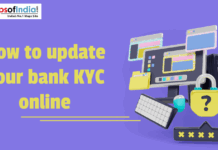
Every morning, my email is bombarded with loads of instant or pre-approved personal loan or credit card offers. I’m sure you are also bombarded with such customized and attractive offers every day. If you fall for the advertisement, you’ll surely repent. Personal loans come at a higher cost, so avoid them in general. Only in case of an emergency should you borrow money.
Top 10 Factors to Keep in Mind before Applying for a Personal Loan:
1. Loan Amount
Before applying for a loan, you must be sure about the amount of loan and the time period for which you need to borrow. Always keep in mind that personal loans come with a significant interest rate. The lesser amount you borrow, better are the chances of repayment. You should borrow only that much of money that is absolutely necessary, and try to make arrangements for the rest of the money from other sources.
If the requirement is for medium to long term, take a look at liquidating your fixed deposits or mutual funds, if you have any. For a shorter duration, you can also take a loan against your existing fixed deposits or LIC policies.
2. Interest Rate
Every personal loan comes with a certain amount of interest rate. It affects the installment amount that you need to pay on a monthly basis throughout the repayment period. Inquire about the rates, compare between different banks, and go for the one that is lowest (provided you have a good credit score). If possible, try to negotiate the rate with the lending financial institution or the bank.
3. Repayment Period
It is the time period over which a person is expected to pay off the entire loan amount (which includes principal + interest components). A person should try to keep the repayment period as short as possible. Longer the repayment period, more you have to pay in interest. However, many people extend this period to keep their monthly instalment amount within a certain level, in accordance with their monthly income and comfort zone. The monthly instalment amount increases as repayment period decreases. Try to strike a balance between the two as per your own convenience.
4. EMI
EMI (Equated Monthly instalment) is the monthly instalment a borrower has to pay the lender. The EMI amount is equated by taking into account 3 aspects: amount of loan borrowed, rate of interest, and repayment period. You can easily check EMI amount (based upon your eligibility) with the help of an EMI Calculator for personal loans. You can tweak these three aspects in the calculator to see how it impacts the EMI. Choose an EMI amount that you are most comfortable with.
5. Availability of Prepayment Option and the Associated Charges
There are some periods when we suddenly need lots of money. That’s when we have to go for loans. However, there are times when we get a windfall, such as bonus or some kind of arrears. In such circumstances, we generally use that money or a part of it for paying off the entire loan amount before the repayment period is over. Personal loan creditors generally charge a certain percentage for closing the loan prematurely. So, it is important to check the prepayment charges (if any) or lock-in period information even before applying for a personal loan, and negotiate zero prepayment charges if possible.
6. Lender’s Credibility
There was a time when loans were disbursed by banks only. However, there are many RBI-registered financial institutions that offer personal loans (such as Capital First, Bajaj Finance, and many others). However, not all are RBI registered. Some could be fly-by-night operators and also scams. To avoid the trap of those scam financial institutions, always check the credibility of the lender, since you will be furnishing your name, address, phone number, PAN, income and bank details.
7. Loan Disbursement Time
There are certain times when you need the money instantly. If you want to get that money through a personal loan, you should ensure that the loan disbursal time is as short as possible. Even after your loan has been approved, the loan disbursal time is significantly large. In emergency situations, try to get the loan from a lender who disburses personal loans within hours after approval.
8. Simplicity of Loan Processing
Usually, banks ask a borrower for loads of documents (Income Tax Returns, Pay Slip proofs, and others) for checking eligibility of the borrower. Nowadays, many loan providers have done away with the complicated loan processing. The process has been simplified and the borrower has to apply for a personal loan (ranging from Rs. 10,000 to Rs. 5,00,000) through the lender’s app.
9. Assess All the Associated Costs
Besides prepayment fees, there are other kinds of associated costs too, such as the processing fee and the late payment fee.
-
Processing Fee:
They are of two types:
- 1-2% of the personal loan amount
- Flat rate
Lower the processing fees, the better.
-
Late Payment Fee:
In case, a borrower gets late in paying any monthly EMI, a late payment fee is levied.
So, the next time you apply for a loan, check out these fees beforehand.
10. Try to Avoid Add-On Offers/Financial Products
Generally, lending financial institutions or banks try to push sales of other financial products such as medical/personal/accidental/life insurance along with loans. If the premium amount is a single-time payment, then it is deducted from the loan amount even before the money comes in your bank. In case of recurring insurance premium, the same gets added to the monthly EMI. So, try to avoid such add-on offers.
Conclusion
Keep these 10 aspects in mind while taking a loan to get the best deal.
Related Link:
Personal Loan Vs Loan Against Property





